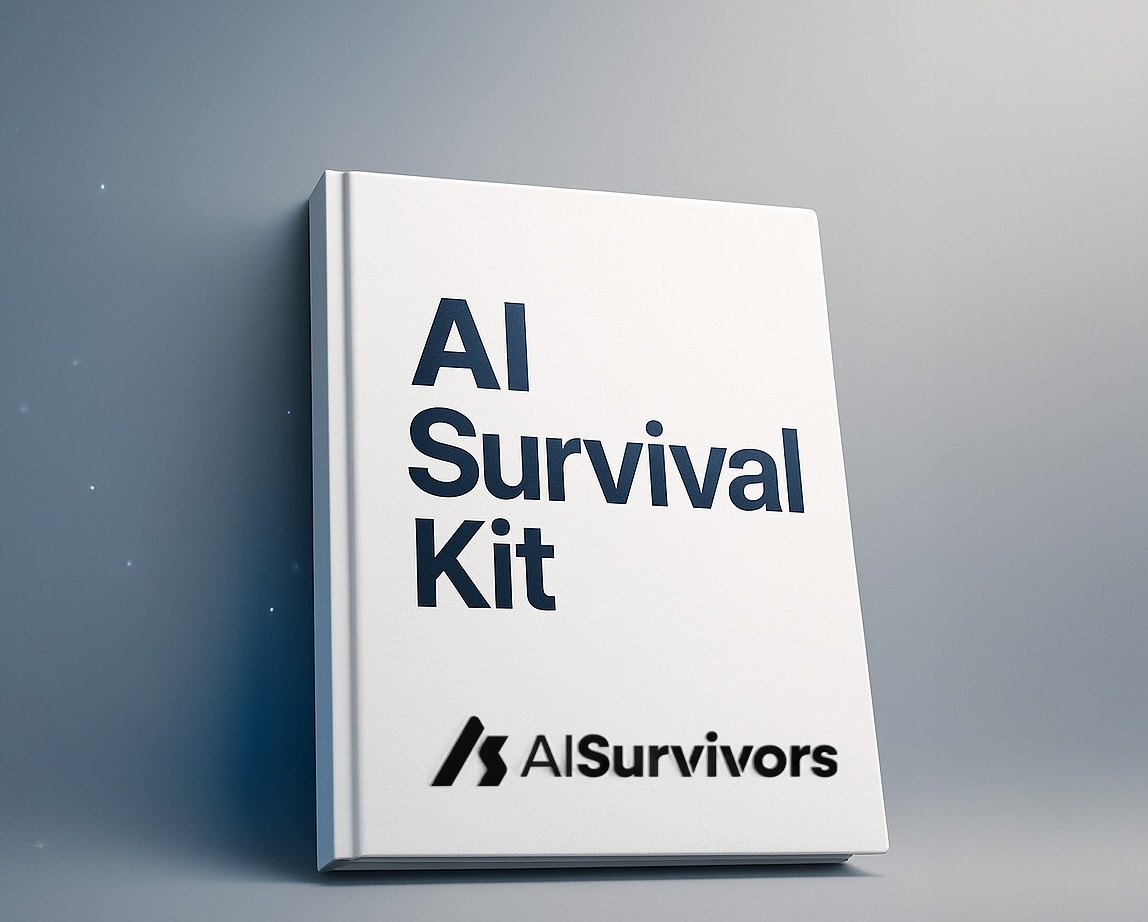

The last two years changed everything.
AI went from futuristic to fundamental — and yet, most small and medium businesses are still standing on the sidelines.
Not because they don’t see the potential, but because they believe it’s not for them.
They think:
The truth?
You don’t need massive data lakes or a team of engineers.
You just need one working use case that saves time or cuts waste — and then you build from there.
At AI Survivors, we’ve seen companies save hours every week just by starting small: automating repetitive admin, organizing customer data, or letting AI draft simple emails.
The hardest part isn’t the tech.
It’s getting started.

Forget the flashy AI tools for a moment.
Forget building your own chatbot or training a custom model.
Start where the friction lives — the everyday stuff your team already hates doing.
Think:
These aren’t glamorous tasks, but they’re perfect for AI because they’re structured, repetitive, and measurable.
When you automate even one of these, you instantly get time back — and proof that AI actually works for you.
Pro tip: If a task repeats weekly and takes more than 10 minutes, it’s a candidate for automation.
Most businesses already pay for tools that quietly include AI — they just don’t use them.
Google Workspace, Microsoft 365, Notion, HubSpot, ClickUp — all of them have hidden AI features that can save hours.
You don’t need new platforms; you need better connections between what’s already there.
Tools like n8n, Zapier, or Make allow you to connect everything and trigger AI actions automatically — without writing a single line of code.
Example:
When a new customer signs up → summarize the form → generate a personalized welcome email → send via your CRM.
That’s one simple automation that can save you hours every week.
AI doesn’t replace people — it amplifies them.
The best results come from hybrid setups where AI handles the grunt work and humans make the decisions.
Imagine your AI drafts 10 personalized follow-up emails, but you make the final edits before sending.
That’s 10x faster output without losing control or authenticity.
In our projects, we call this the “human-in-the-loop” principle — fast where it should be, careful where it matters.
Small businesses often skip this step — and that’s where automation projects quietly die.
Don’t just launch an AI system and hope for magic.
Measure the impact.
Ask:
These answers turn AI from a “nice experiment” into a business asset.
Once you can prove results — even small ones — you earn the confidence to scale up.
Most companies fail with AI because they try to do everything at once.
The winning strategy? Start narrow, scale naturally.
After one system works, move to the next layer:
First, build reliable automations.
Then connect them into workflows that talk to each other.
Then, scale what works — across marketing, operations, and customer support.
This “layered” approach ensures you don’t overbuild or overspend — you grow where it actually adds value.
When small businesses see AI as a single project, they fail.
When they see it as an ongoing upgrade to how work gets done, they start winning.
AI isn’t replacing humans. It’s replacing the friction between humans and results.
You don’t need to become an AI company.
You just need to become AI-powered.
If you’re unsure where to begin, start with clarity — not code.
Look at your business through one simple lens:
“What tasks drain time but don’t need human creativity?”
That’s where AI belongs first.
At AI Survivors, we help small and medium businesses turn AI from a buzzword into real progress — one working system at a time.
Start small, fix what’s broken, and prove where AI delivers value.

